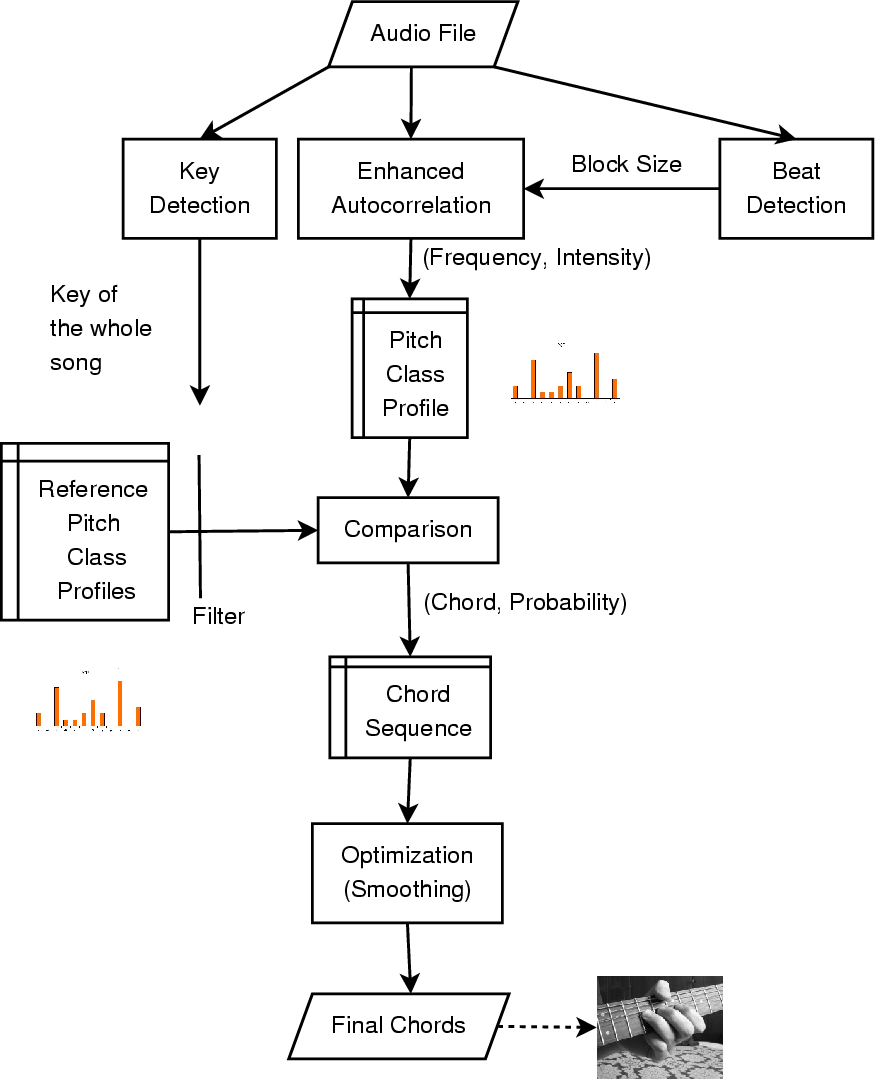Institute of Software Technology and Interactive Systems
Information & Software Engineering Group
Music Information Retrieval

Automatic Chord Detection
Many music-related tasks that humans solve easily, like distinguishing the constituting instrument in polyphonic audio or the recognition of rhythm or harmonies are still not solved for computers. Especially the development of an automatic transcription system that computes the score out of a music recording is still a distant prospect despite decades-long research efforts. Here we deal with a subproblem of automatic transcription - automatic chord detection. Chord detection is particularly interesting as chords are comparatively simple and stable structures, and at the same time completely describe the harmonic properties of a piece of music.
We have designed an algorithm that operates on musical pieces of arbitrary instrumentation and considers music theoretical knowledge. Our detection method incorporates rhythm and tonality of the musical piece the same as knowledge about the common frequencies of chord-changes. An average accuracy rate of 65% has been achieved on a test set of 19 popular songs of the last decades and confirms the strength of this approach.
The Algorithm

Large flowchart of the algorithm
Tools
|
Several tools have been
implemented to help the user interpret and evaluate the outputs of
genchords. These include labeldiff, that compares
two labelfiles (files containing time-chord pairs for the song) and
prints out a detailed comparison table as well as confusion matrix and
statistical data. Transpose provides methods for
transposing and converting labelfiles to different formats, including
enharmonic equivalent representations.
But probably the most interesting tool is a tool to resynthesize the detected chords and mix them with the original song. This tool, called chordmix, enables the user to get a quick first estimation of the correctness of the detected chords by simply listening to the results.  |
Evaluation
|
On a testset of 19 songs
our system achieved an average accuracy rate of 65%. As our algorithm
has a modular design we were able to evaluate the influence of each
module seperately: The basic chord-detector ("shortspan detection")
without beat, key and optimization modules only correctly detected the
chords at an average of 37% of the time. Beat detection allone enhances
detection quality by 6%, optimization by 7% and key detection alone by
13%. See the diagram below for detailed results on every test-song.
Testset
|
|||||||||||||||||||||||||||||||||||||||||||||||||||||||||||||||||||||||||||||||||||||||||||||||||||||||||||||||||||||||||||||||||||||||||||||||
Downloads
- GenChords Chord Detector (C++ source code)
- BeatRoot Beat Tracker by Simon Dixon (necessary for GenChords)
- Truth files used for evaluation: Testset1 | Testset RWC
- Master's Thesis: Veronika Zenz: "Automatic Chord Detection in Polyphonic Audio Data"
| top |
created 17.04.2007 by Veronika Zenz, last
edited 21.11.2007 by Thomas Lidy
|

